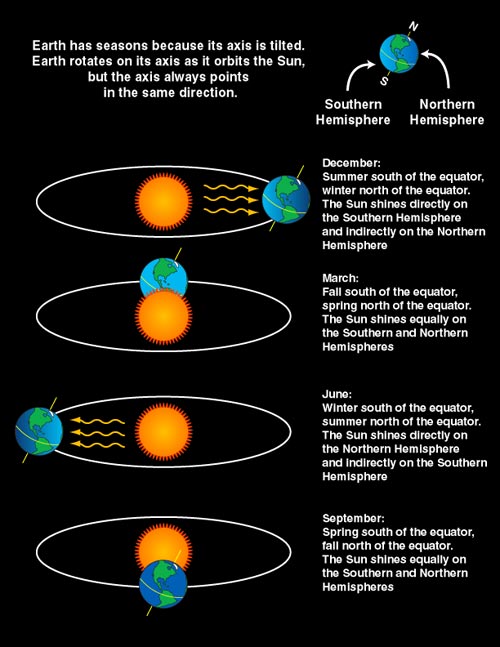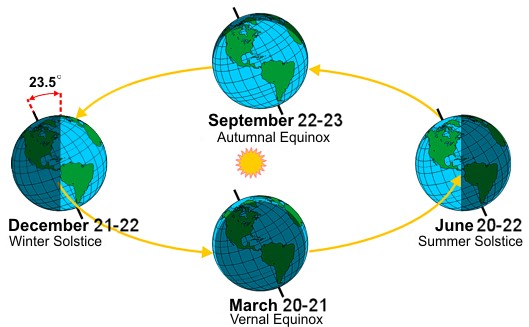
Courtesy NASA
https://www.weather.gov/dvn/Climate_Astronomical_Seasons
Its astronomical counterpart—the autumnal equinox—is a bit of a misnomer. The word equinox is our late Middle English iteration of the Latin term for “equal night,” but, astronomically speaking, this isn’t exactly true. The equinox is the single moment when the Earth’s axis is pointing neither toward nor away from the sun, providing entire hemispheres equal portions of light. This year’s autumnal equinox occurs at precisely 7:30 AM on Tuesday, September 22nd, and though daylight and night will share almost equal portions of the clock that day, they don’t split it evenly until two or three days later on what is called the ‘equilux’, meaning “equal light.”

Courtesy National Weather Service (NWS)
https://www.weather.gov/abq/clifeatures_springequinox
But wait. It gets a little more complicated. Because the Earth’s axis begins tilting away from the sun immediately following the autumnal equinox (or toward it following the vernal equinox), different latitudes will experience the equilux at different intervals. As a rule, the closer one is to the equator, the longer they will wait for the equilux to occur in the fall and the sooner it will arrive in the spring. That is, unless you live within 5 latitudinal degrees of the equator. Then, sadly, you don’t get an equilux at all, ever, because you always have more than twelve hours of daylight.
Depending on where you live here in Utah, you will experience the equilux sometime on September 25th or 26th. So, this week, take out your stopwatch, and turn your eyes skyward.
I’m Josh Boling, and I’m Wild About Utah!
Credits:
Photos: Courtesy Weather.gov, US National Weather Service(NWS), https://www.weather.gov/dvn/Climate_Astronomical_Seasons
Photos: Courtesy
Sound: Courtesy & Copyright Friend Weller, Utah Public Radio
Text: Josh Boling, 2020
Sources & Additional Reading
The Equinox Isn’t What You Think It Is, PBS Digital Studios, https://www.youtube.com/watch?v=MVDCsXUygEw
Kher, Aparna, Equinox: Equal Day and Night, Almost, https://www.timeanddate.com/astronomy/equinox-not-equal.html
City of North Logan, Utah, USA — Sunrise, Sunset, and Daylength, September 2020, Time and Date AS, https://www.timeanddate.com/sun/@7173983
Seasons, SciJinks, Jet Propulsion Laboratory, https://scijinks.gov/review/solstice/seasons/
Which Pole is Colder?, Climate Kids, The Earth Science Communications Team, NASA’s Jet Propulsion Laboratory, California Institute of Technology, https://climatekids.nasa.gov/polar-temperatures/
Earth’s Seasons – Equinoxes and Solstices – 2018-2025, The U.S. Naval Observatory, Astronomical Applications Department, https://www.weather.gov/media/ind/seasons.pdf
Changing seasons, Climate Resource Collections, National Oceanic and Atmospheric Administration, https://www.noaa.gov/education/resource-collections/climate/changing-seasons
Boling, Josh, A Solstice Vignette, Wild About Utah, December 16, 2019, https://wildaboututah.org/a-solstice-vignette/
Equinoxes, National Geographic, https://youtu.be/kaG6PTVrFP4
What is an Equinox? National Geographic, https://youtu.be/enlih8M5DN0
The Autumnal Equinox is Near, Watch the Skies Blog, NASA, https://blogs.nasa.gov/Watch_the_Skies/tag/equinox/
